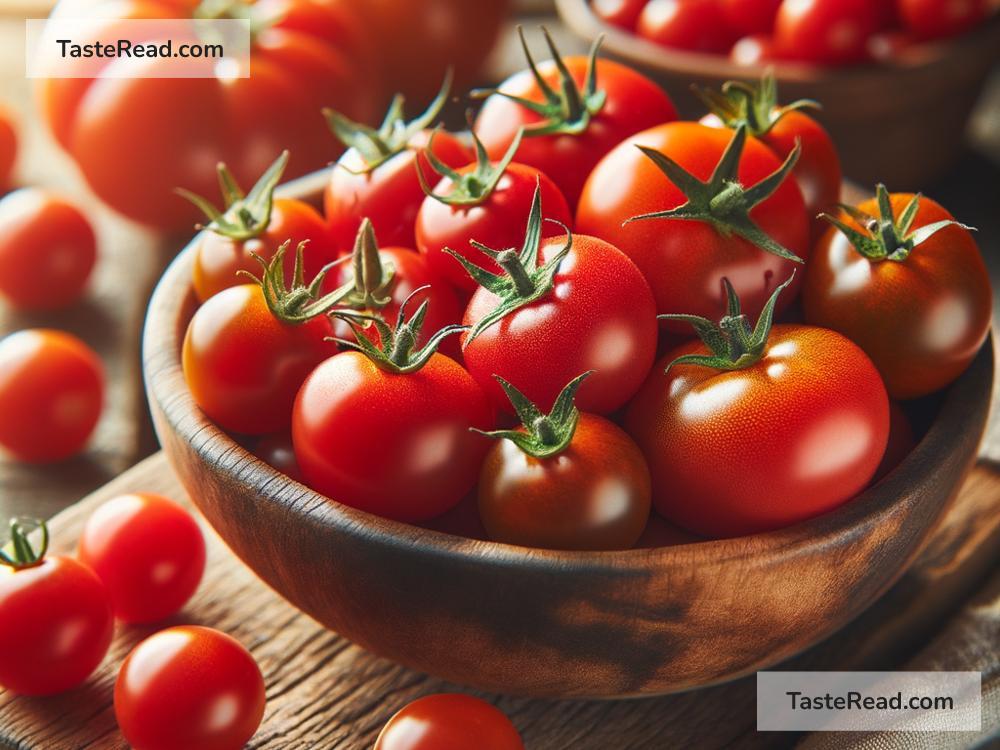Why Cherry Tomatoes Are Sweeter Than Larger Varieties
If you love tomatoes, you’ve probably noticed that cherry tomatoes often taste sweeter than larger tomato varieties, like beefsteak or Roma. Have you ever wondered why this happens? It’s all about science, how plants grow, and some interesting differences between the varieties. Let’s break it down in simple, easy-to-understand terms.
Size Matters: The Sugar-to-Juice Ratio
Cherry tomatoes are smaller than larger varieties, but that small size works in their favor when it comes to sweetness. In tomatoes, the sweetness comes from natural sugars. These sugars are evenly spread out throughout the fruit. Because cherry tomatoes are tiny, their sugar is packed into a smaller space. This means the sugar is more concentrated, giving cherry tomatoes a sweeter taste.
Think about it this way: Imagine sprinkling sugar into a small teaspoon compared to spreading the same amount of sugar over a big dinner plate—there’s much less sugar in each bite on the plate. Cherry tomatoes are like the teaspoon; the sweetness is packed tightly, making the flavor stand out more.
More Sunshine, More Sugar
Plants create sugar during photosynthesis—the process where they use sunlight to make food. Tomatoes are no different. The amount of sugar a tomato has depends on several factors, one of the biggest being the amount of sunlight it gets.
Smaller cherry tomatoes typically grow faster and ripen quicker than larger varieties. Because of their fast ripening, cherry tomatoes often spend more time basking in the sun during their growing period. This extra sun exposure helps them produce more sugar, which contributes to their sweet, flavorful taste.
Genetics Play a Big Role
Not all tomatoes are created equal. Different types of tomatoes have distinct genes that determine their size, shape, flavor, and other characteristics. Cherry tomatoes are specifically bred to have a sweeter taste.
Large varieties, like beefsteak tomatoes, are often bred for other reasons, such as their size, juiciness, or texture. Farmers and scientists prioritize these traits for slicing, sandwiches, or cooking, which doesn’t always require a lot of sweetness. On the other hand, cherry tomatoes are bred for fresh snacking and salads, where sweetness can make the eating experience much more enjoyable.
Acid and Sugar Balance
Tomatoes don’t just taste sweet—they usually have a balance of sweetness and tanginess. That tangy flavor comes from natural acids in the fruit. Cherry tomatoes often have a higher concentration of sugar compared to acid, which makes them taste sweeter. Larger tomatoes tend to have more juice and less sugar, which balances out the tangy taste and keeps them from being sweet.
It’s like lemonade: If you add a lot of sugar but only a little bit of lemon juice, the drink is very sweet. But if you add much more lemon juice and less sugar, it’s tangy. Cherry tomatoes are like the sweeter lemonade—you still taste the tang, but the sugar stands out.
Growing Conditions Matter
How and where tomatoes are grown also makes a big difference in their flavor. Cherry tomatoes, whether grown in a garden, greenhouse, or even a pot on a balcony, often have an ideal growing environment that helps enhance their natural sweetness. Smaller tomatoes don’t need as much water or space as larger varieties, and they often thrive in conditions that concentrate their sugars and flavors.
On the other hand, large tomatoes tend to require more water and nutrients to grow properly. This extra water can dilute their flavor, making them less sweet compared to their smaller counterparts.
Cooking and Pairing Flavors
Cherry tomatoes aren’t just sweet—they’re versatile. Because of their concentrated flavor, they taste amazing raw in salads, roasted with olive oil, or even on their own as a healthy snack. Their natural sugars burst with flavor in your mouth, making them an easy favorite.
Larger tomatoes, while not as sweet, are perfect for other uses. They’re great for making sauces, slicing for sandwiches, and cooking in stews. While they have less sugar, they often hold up well under heat and blend beautifully with herbs and spices.
So, Why Choose Cherry Tomatoes?
If you love sweetness and want a fresh snack or salad ingredient, cherry tomatoes are the perfect choice. Their concentrated sugar and balance of tangy and sweet flavors make them stand out. Plus, their small size and vibrant colors (red, yellow, orange, and even purple!) make them visually appealing and fun to eat.
Larger tomatoes, however, are better suited for hearty meals and recipes. They’re ideal for cooking and creating depth in dishes. Knowing the differences between tomato varieties can help you pick the right one for your needs.
Sweet Enough for Everyone
Whether you prefer the sugary taste of cherry tomatoes or the more balanced flavor of larger tomatoes, there’s a variety out there for everyone. Cherry tomatoes may have the upper hand in sweetness because of their size, genetics, and growing conditions, but each type of tomato has its own unique place in the kitchen.
The next time you bite into a cherry tomato and marvel at its sweetness, you’ll know why it’s so delicious and how nature has packed all that flavor into a tiny little package!


